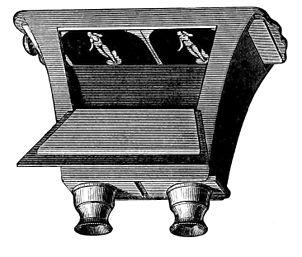and about sound-waves before the telephone came into existence. To him distinctly belongs the credit of objectively demonstrating the essential features of binocular vision, with the first instrument actually constructed in accordance with principles which possibly others might have applied, if they had possessed equal clearness of conception and fertility of invention. So slight was the general appreciation of the fact that the two retinal images in binocular vision are dissimilar, that Wheatstone made this discovery independently, and then added the application which others had failed to make, but without the knowledge that any one had preceded him in even forming the conception. The originality of his discovery is not affected by the unemphatic statements afterward found to have been recorded by those who preceded him in thought but not in act.
One of these predecessors was Mr. James Elliot, of Edinburgh, who, "previous to or during the year 1834, had resolved to construct an instrument for uniting two dissimilar pictures." By delay he lost the golden opportunity, which, without envy or knowledge of his existence, was snatched away from him by Wheatstone. Not until 1839 did Elliot construct the instrument which he had contemplated. It was simply a wooden box, open at the extremities, so that a pair of conjugate pictures on glass could be placed at one end, and all light except that which was transmitted through them could be excluded from the eyes placed at the other end. He was not aware of Wheatstone's invention, which indeed did not become generally known for a

Fig. 7.—Brewster's Stereoscope, 1849.
number of years after its completion, because not adapted for general use, and because no other means than free-hand drawing existed for the accurate preparation of the conjugate pictures. Those employed by Wheatstone were outlines of various geometric solids. Elliot's first stereograph was a landscape, represented in Fig. 5, which is a
